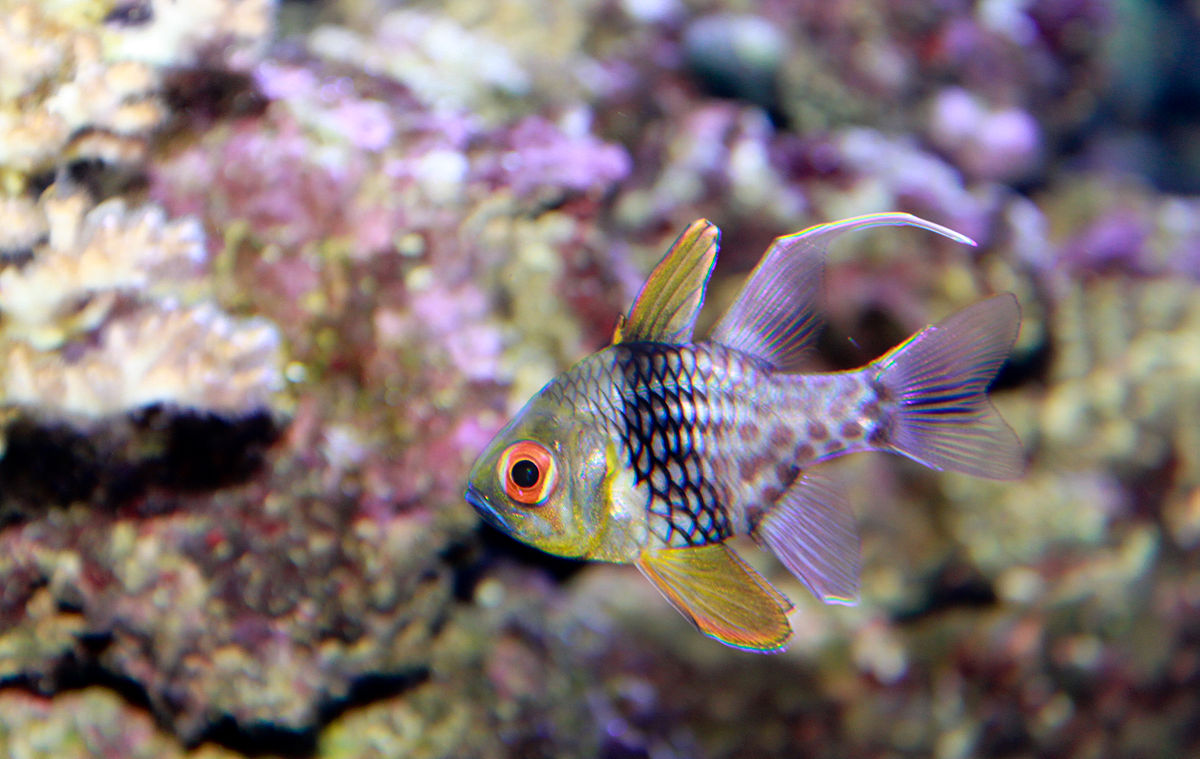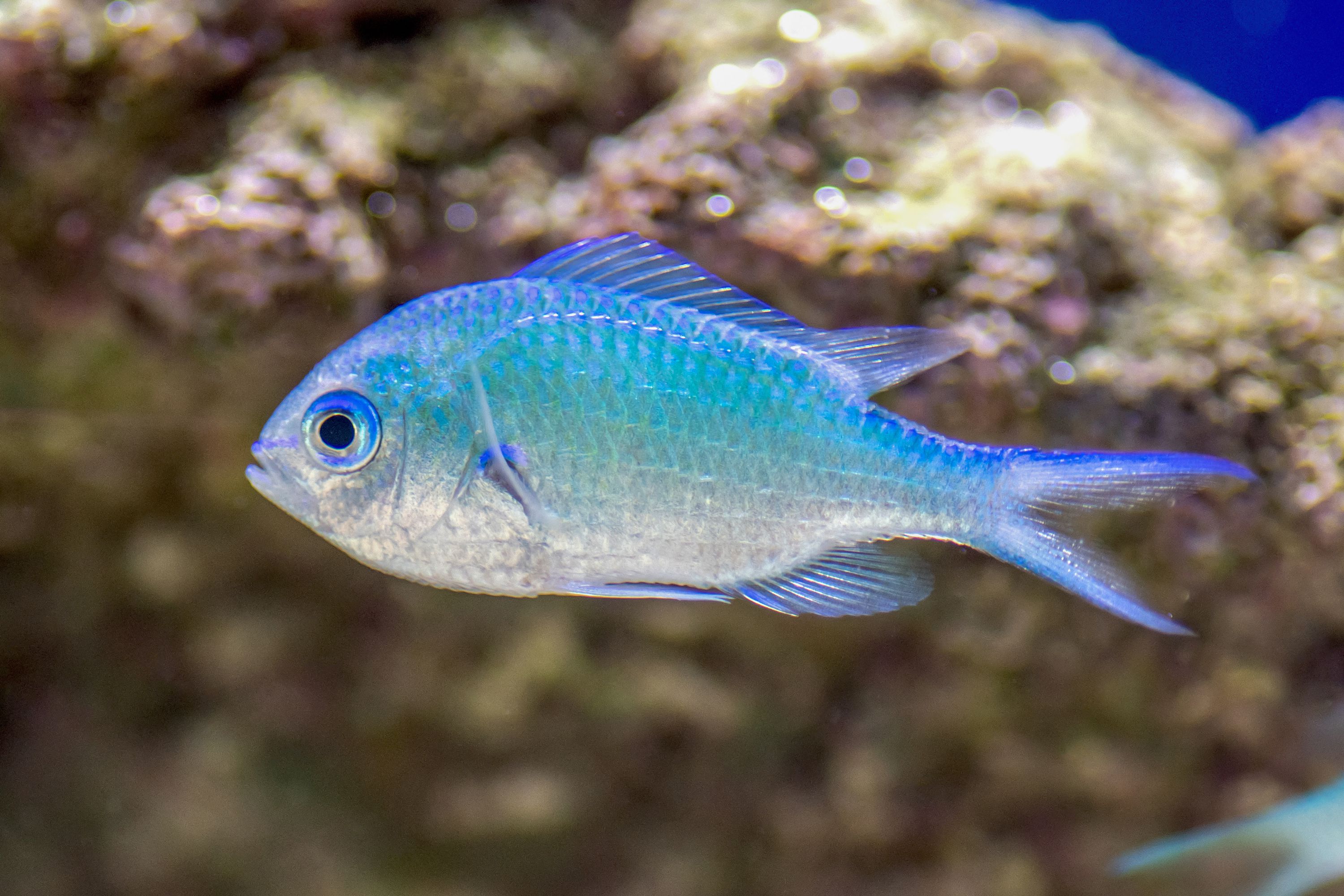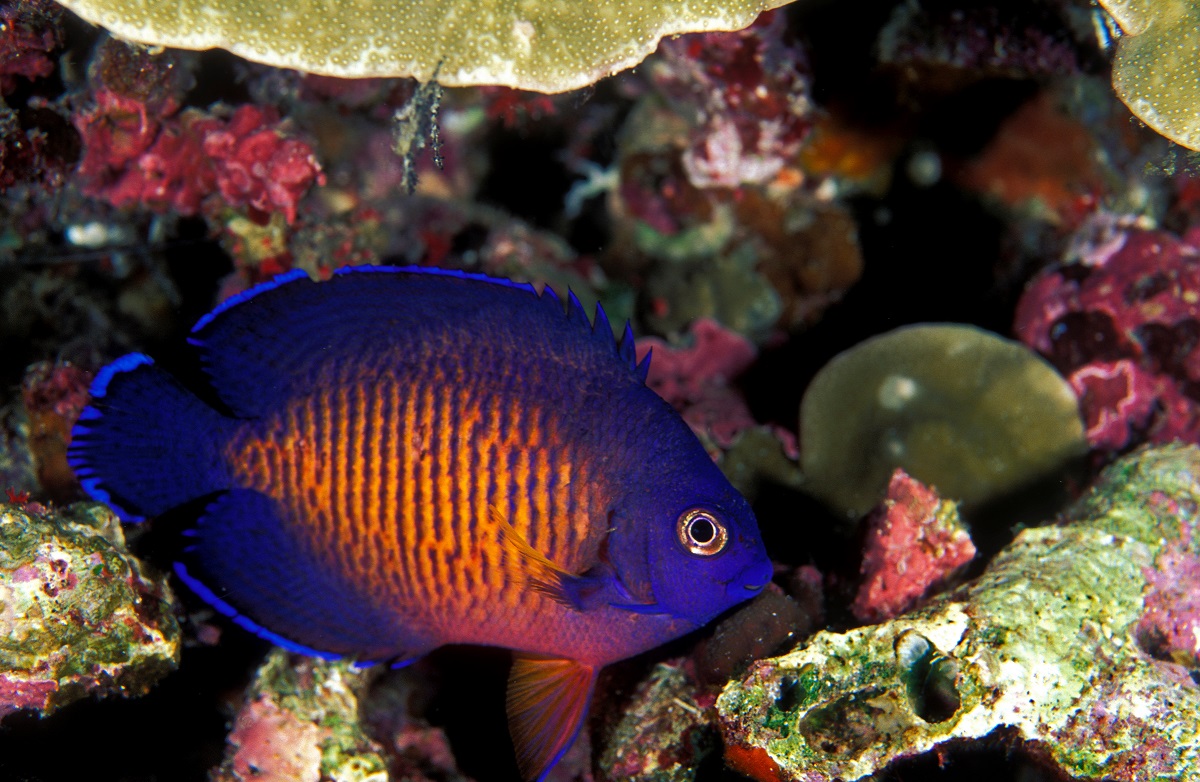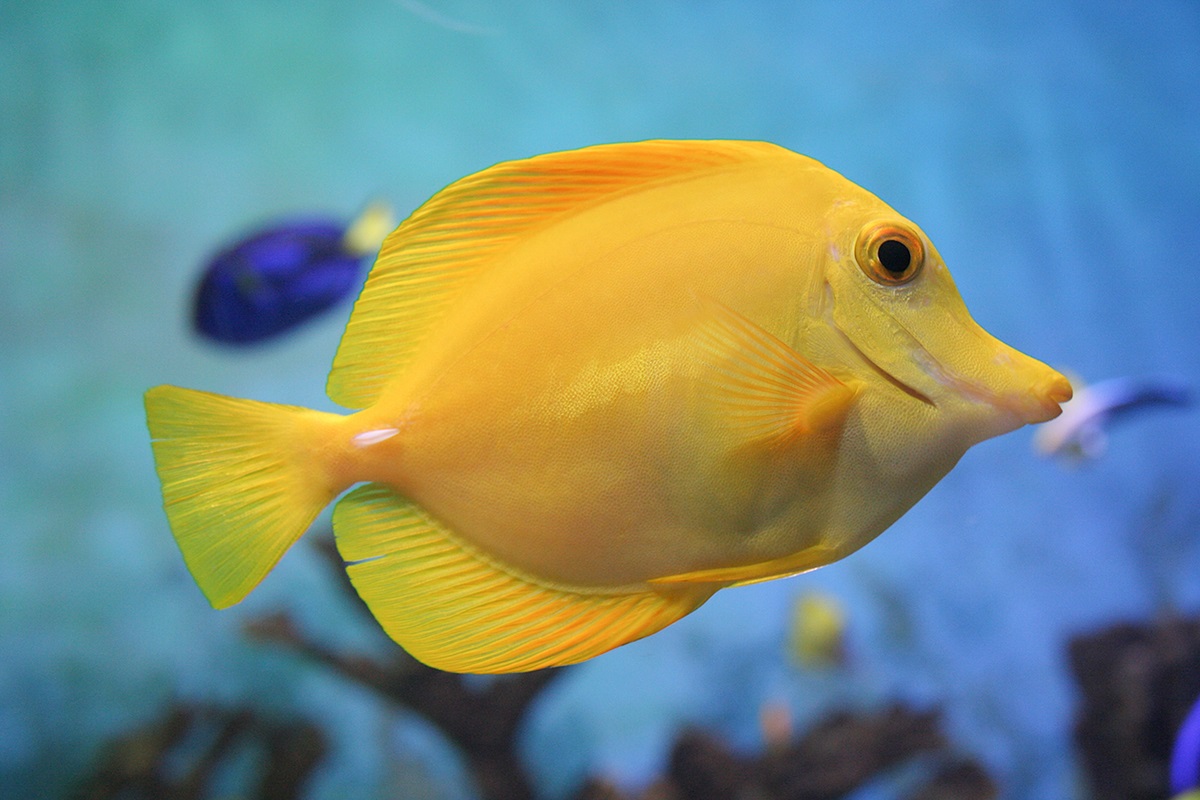Saltwater fish are known for their vibrant colors and unique appearances, making them a popular choice for aquarium enthusiasts.
In this article, we will explore 10 types of saltwater fish that make the best pets, their care requirements, and their difficulty level for raising. Whether you are a beginner or an experienced hobbyist, there is a saltwater fish that will suit your needs and preferences.
You are reading: 10 Types Of Saltwater Fish And What Make The Best Pets

10 Types Of Saltwater Fish And What Make The Best Pets
Clownfish
Clownfish are a popular choice for saltwater aquariums due to their vibrant colors and ease of care. Here are some key points to consider when caring for clownfish based on the search results:
Tank Size
– A minimum of 20-29 gallons is recommended for an adult clownfish.
– Some sources recommend a larger tank if you want to keep more than one clownfish.
Habitat
– Clownfish like to hide in or near a cave, coral, or crevice, darting out to defend territory or capture food.
– They tend to remain in the middle and lower levels of the aquarium.
– Mated pairs are known to breed in the home aquarium.
– They may find sanctuary within the tentacles of an anemone.
Food
– Clownfish are omnivores and should be fed a varied diet of commercial marine fish flakes, supplemented with small chunks of algae, shrimp, and worms.
– Adults will need feeding twice a day, and juveniles will need feeding 3 or 4 times a day.
– Only give what they can eat within 2-3 minutes, and clean excess food out of the tank to keep the water optimal.
Care
– Clownfish are hardy and easy to care for, making them a good choice for beginners.
– They can still get sick, so it’s important to monitor their health and water quality.
– Clownfish should not be kept with aggressive fish such as Groupers, Lionfish, Eels, and Triggerfish, or with other species of clownfish.
– They require regular cleaning and maintenance, including daily feeding and observation, frequent water changes, filter replacement, trace elements, and upkeep of integrated equipment.
– Clownfish need light, and the lights should be on for 8-12 hours each day and off for the remaining 12-16 hours.
Overall, clownfish are a great choice for a saltwater aquarium due to their ease of care and vibrant colors. By providing a suitable habitat, proper diet, and regular maintenance, you can enjoy the beauty and uniqueness of clownfish in your own home.
Flame Angelfish

Flame Angelfish, also known as Dwarf Flame Angelfish, are a popular choice for saltwater aquariums due to their vibrant colors and unique appearance. Here are some key points to consider when caring for Flame Angelfish based on the search results:
Tank Size
– A minimum of 55-70 gallons is recommended for an adult Flame Angelfish.
– Some sources suggest a larger tank for optimal growth and well-being.
Habitat
– Flame Angelfish require plenty of hiding places and live rock for grazing.
– They spend their time weaving in and out of the live rock, looking for food.
Food
– Flame Angelfish are algae grazers and will feed on various types of algae.
– They may also consume sessile invertebrates, which makes them not completely reef-safe.
Care
– Flame Angelfish are relatively easy to keep, but they are not as hardy as some other community fish.
– They can be slightly more sensitive to changes in water parameters, so maintaining stable conditions is important.
– Quarantine is recommended before adding Flame Angelfish to the display aquarium to prevent the spread of diseases.
– They should not be attempted as one of the first additions to a new aquarium, as water quality and stocking sequence can affect their ability to adapt to new additions in terms of aggression.
Tank Mates
– Flame Angelfish can be kept with other fish, but it is important to choose species that are smaller than the Flame Angelfish to avoid stress and harassment.
– Consult compatibility charts to ensure a peaceful tank environment.
Breeding
– If you want to attempt breeding Flame Angelfish, a deep aquarium is recommended to allow the fish to duplicate their swim to the surface.
– You can also encourage spawning behavior by scheduling your lights to imitate the day-night pattern for several weeks.
Overall, Flame Angelfish are a beautiful addition to a saltwater aquarium. By providing a suitable habitat, proper diet, and regular maintenance, you can enjoy the vibrant colors and unique behavior of these fascinating fish in your own home.
Green Chromis

Green Chromis, also known as Blue-Green Chromis or Chromis viridis, are a popular choice for saltwater aquariums due to their vibrant colors and peaceful nature. Here are some key points to consider when caring for Green Chromis based on the search results:
Tank Size
– A minimum tank size of 29 US gallons (110 liters) is recommended for a small school of Green Chromis, while a single specimen can be kept in a 10 US gallon (38 liters) tank.
– They are best kept in small groups of odd numbers.
Habitat
– Green Chromis are found in the Indo-Pacific region, including the Red Sea, and are commonly associated with coral reefs.
– They prefer a well-lit aquarium with plenty of hiding places, such as live rock, for them to explore and graze on.
Food
– Their diet should consist of vitamin-enriched meaty foods and flake/pellet foods for marine fish.
– They are omnivorous and will also feed on small crustaceans and plankton in the water column.
Care
– Green Chromis are relatively hardy and are suitable for beginners.
– They are peaceful inhabitants of saltwater aquariums and can be kept in fish-only or community reef setups.
– They act as “dithering” fish, drawing out shy and reclusive species in the tank.
Tank Mates
– Green Chromis are compatible with a variety of tank mates, including other peaceful fish and invertebrates.
– They should not be housed with larger predatory fish, such as groupers, lionfish, and eels, as they may become food themselves.
Breeding
– Some aquarists have successfully bred Green Chromis in home aquariums.
– Males are responsible for preparing and guarding the nest, which is shared with several females.
– The large number of eggs will hatch in 2-3 days, and the male will feed on unhatched eggs to prevent them from becoming breeding grounds for microorganisms.
Read more : Top 10 Most Romantic Animals In The World
Overall, Green Chromis are a beautiful and peaceful addition to a saltwater aquarium. By providing a suitable habitat, proper diet, and regular maintenance, you can enjoy the vibrant colors and unique behavior of these fascinating fish in your own home.
Damselfish
Damselfish are a diverse group of saltwater fish known for their vibrant colors and active nature. Here are some key points to consider when caring for Damselfish based on the search results:
– Tank Size: A minimum tank size of 30 gallons is recommended for a single Damselfish, with additional space needed for multiple individuals or larger species.
– Habitat: Damselfish are native to tropical coral reefs and prefer a well-lit aquarium with plenty of hiding places, such as live rock or coral, for them to explore and establish territories.
– Food: Damselfish are omnivorous and should be offered a varied diet of flakes, pellets, frozen foods, and live or frozen meaty foods, such as brine shrimp or mysis shrimp.
– Care: Damselfish are generally hardy and suitable for beginners, but some species can be more aggressive and territorial, so choose tank mates carefully.
– Tank Mates: Damselfish can be kept with other peaceful fish, but they may become aggressive towards smaller or more passive tank mates.
– Lifespan: In the wild, Damselfish have an average lifespan of 6 to 8 years, but with proper care, they can live even longer in captivity.
Overall, Damselfish are a popular choice for saltwater aquariums due to their vibrant colors and active nature. By providing a suitable habitat, proper diet, and regular maintenance, you can enjoy the beauty and uniqueness of Damselfish in your own home.
Royal Gramma
Royal Gramma, also known as Fairy Basslet, is a popular choice for saltwater aquariums due to its vibrant colors and peaceful nature. Here are some key points to consider when caring for Royal Gramma based on the search results:
– Tank Size: A minimum tank size of 30 gallons is recommended for a single Royal Gramma, with additional space needed for multiple individuals or larger species.
– Habitat: Royal Grammas are native to the Caribbean and prefer a well-lit aquarium with plenty of hiding places, such as live rock or coral, for them to explore and establish territories.
– Food: Royal Grammas are carnivorous and should be offered a varied diet of flakes, pellets, frozen foods, and live or frozen meaty foods, such as brine shrimp or mysis shrimp.
– Compatibility: Royal Grammas are generally peaceful and can be kept with a variety of tank mates, including other peaceful fish and most corals.
– Lifespan: In the wild, Royal Grammas have an average lifespan of 5 to 10 years, but with proper care, they can live even longer in captivity.
Overall, Royal Grammas are a beautiful and peaceful addition to a saltwater aquarium. By providing a suitable habitat, proper diet, and regular maintenance, you can enjoy the vibrant colors and unique behavior of these fascinating fish in your own home.
Banggai Cardinalfish
Banggai Cardinalfish, also known as Pterapogon kauderni, are a popular choice for saltwater aquariums due to their unique appearance and peaceful nature. Here are some key points to consider when caring for Banggai Cardinalfish based on the search results:
– Tank Size: A minimum tank size of 30 gallons is recommended for a pair of Banggai Cardinalfish, with additional space needed for larger groups.
– Habitat: Banggai Cardinalfish are native to the Banggai Islands in Indonesia and prefer a well-lit aquarium with plenty of hiding places, such as live rock or coral, for them to explore and establish territories.
– Food: Feeding Banggai Cardinalfish can be challenging when first introduced to your tank. They can be quite finicky and may not go after flakes or pellets. Offering them small, live or frozen meaty foods, such as brine shrimp or mysis shrimp, can help entice them to eat.
– Compatibility: Banggai Cardinalfish are considered reef-safe and can peacefully coexist with corals, invertebrates, and other tank mates. They are safe to keep with any invertebrates that won’t bother them.
– Water Care: Maintaining great water quality with regular water changes and adequate filtration is important to help keep your Banggai Cardinalfish healthy.
– Breeding: Banggai Cardinalfish breed readily in the home aquarium. When ready to breed, the male will carry the eggs in his mouth until they hatch.
Overall, Banggai Cardinalfish are a unique and peaceful addition to a saltwater aquarium. By providing a suitable habitat, offering them the right food, and maintaining proper water quality, you can enjoy the beauty and unique behavior of these fascinating fish in your own home.
Coral Beauty

Coral Beauty Angelfish, also known as Centropyge bispinosa, are a popular choice for saltwater aquariums due to their vibrant colors and peaceful nature. Here are some key points to consider when caring for Coral Beauty Angelfish based on the search results:
– Tank Size: A minimum tank size of 30 gallons is recommended for a single Coral Beauty Angelfish, with additional space needed for larger groups or if you plan to keep them in a community tank.
– Water Parameters: Coral Beauty Angelfish are hardy and can thrive in normal saltwater parameters. Regular water changes and maintaining clean water are essential for their well-being.
– Habitat: Provide plenty of hiding places, such as live rock or coral, for the Coral Beauty Angelfish to explore and establish territories.
– Food: Coral Beauty Angelfish are omnivores and will primarily eat algae, grazing on the algae growing on your live rock. They can also accept most plant- and meat-based foods, so a varied diet is recommended. Offer them a mix of algae-based foods, such as spirulina, and occasional meaty foods like brine shrimp or mysis shrimp.
– Compatibility: Coral Beauty Angelfish are generally considered reef-safe and can peacefully coexist with corals, invertebrates, and other tank mates. However, some individuals may nip at corals or other sessile invertebrates, so monitor their behavior closely.
Overall, Coral Beauty Angelfish are a beautiful and peaceful addition to a saltwater aquarium. By providing a suitable habitat, offering them the right food, and maintaining proper water quality, you can enjoy the vibrant colors and unique behavior of these fascinating fish in your own home.
Pajama Cardinalfish
Pajama Cardinalfish, also known as Spotted Cardinal or Pajama Cardinalfish, are a popular choice for saltwater aquariums due to their peaceful nature and unique appearance. Here are some key points to consider when caring for Pajama Cardinalfish based on the search results:
– Tank Size: A minimum tank size of 30 gallons is recommended for a small school of Pajama Cardinalfish, with additional space needed for larger groups or if you plan to keep them in a community tank.
– Habitat: Pajama Cardinalfish are mid-tank schooling fish and prefer a well-lit aquarium with plenty of hiding places, such as live rock or coral, for them to explore and establish territories.
– Food: Pajama Cardinalfish are omnivores and will accept a variety of foods, including flakes, pellets, frozen foods, and live or frozen meaty foods, such as brine shrimp or mysis shrimp.
– Compatibility: Pajama Cardinalfish are reef-safe and can peacefully coexist with corals, invertebrates, and other peaceful fish. They do best in small groups or schools, so consider keeping at least a pair of them in your aquarium.
– Lifespan: In the wild, Pajama Cardinalfish have an average lifespan of 3 to 5 years, but with proper care, they can live even longer in captivity.
Read more : The Top 10 Biggest Spiders In The World
Overall, Pajama Cardinalfish are a peaceful and visually appealing addition to a saltwater aquarium. By providing a suitable habitat, offering them the right food, and maintaining proper water quality, you can enjoy the unique beauty and behavior of these fascinating fish in your own home.
Watchman Goby
The Watchman Goby, also known as the Yellow Prawn Goby or Yellow Shrimp Goby (Cryptocentrus cinctus), is a popular choice for saltwater aquariums due to its unique appearance and peaceful nature. Here are some key points to consider when caring for a Watchman Goby based on the search results:
– Tank Size: A minimum tank size of 20 gallons is recommended for a single Watchman Goby, with additional space needed for larger groups or if you plan to keep them in a community tank.
– Habitat: Watchman Gobies are native to the Western Pacific, where they can be found at depths of 1 to 25 meters in coastal bays and lagoons. They are often symbiotic with alpheid shrimps, such as the tiger pistol shrimp, in the wild. Provide plenty of hiding places, such as live rock or coral, for the Watchman Goby to explore and establish territories.
– Appearance: Watchman Gobies can vary greatly in appearance, ranging from brilliant yellow to gray and even brown forms or combinations of each coloring. They have bright blue spots on the head and fins, adding to their unique and attractive appearance.
– Food: Watchman Gobies are carnivorous and will primarily eat small crustaceans and invertebrates in the wild. In captivity, they can be fed a variety of meaty foods, such as frozen or live brine shrimp, mysis shrimp, and small pieces of fish or shrimp.
– Compatibility: Watchman Gobies are generally peaceful and can coexist with other peaceful fish and invertebrates. However, they may become territorial towards other gobies or similar-looking fish, so monitor their behavior closely.
– Jumping: Some aquarists have reported that Watchman Gobies can be jumpers, so it is recommended to have a tight-fitting lid on your aquarium to prevent them from escaping.
Overall, Watchman Gobies are a fascinating and visually appealing addition to a saltwater aquarium. By providing a suitable habitat, offering them the right food, and maintaining proper water quality, you can enjoy the unique beauty and behavior of these fascinating fish in your own home.
Yellow Tang

The Yellow Tang (Zebrasoma flavescens) is a popular saltwater fish species of the family Acanthuridae, known for its vibrant yellow color and presence in reefs. Here are some key points to consider when caring for a Yellow Tang based on the search results:
– Tank Size: A minimum tank size of 75 gallons is recommended for a single Yellow Tang, with additional space needed for larger groups or if you plan to keep them in a community tank.
– Habitat: Yellow Tangs are found in lagoonal and seaward reefs, primarily in the waters west of Hawaii and east of Japan in the Pacific Ocean. Provide plenty of swimming space and hiding places, such as live rock or coral, for the Yellow Tang to explore and establish territories.
– Feeding: Yellow Tangs are herbivores and primarily eat algae in the wild. In captivity, they can be fed a variety of marine-based seaweed, algae, and high-quality commercial herbivore preparations.
– Compatibility: Yellow Tangs can be territorial and may not get along with other tangs or similar-looking fish. It is best to introduce them to the tank last or keep them as the only tang in the aquarium.
– Price: The price of Yellow Tangs can vary, with prices in the USA ranging from $65 to $70 before a collection ban in Hawaii. After the ban, prices have more than quadrupled to over $400.
Overall, the Yellow Tang is a visually striking and sought-after addition to a saltwater aquarium. By providing a suitable habitat, offering them the right food, and maintaining proper water quality, you can enjoy the unique beauty and behavior of these fascinating fish in your own home.
FAQS
1. What are the best saltwater fish for beginners?
Some of the best saltwater fish for beginners include:
– Clownfish
– Green Chromis
– Banggai Cardinalfish (aquaculture)
– Coral Beauty
– Royal Gramma
– Pajama Cardinalfish
– Lawnmower Blenny
– Melanurus Wrasse
– Diamond Goby
2. How difficult are saltwater fish to care for?
Many popular saltwater fish are incredibly hardy and forgiving of beginner mistakes. For example, damselfish are some of the hardiest fish available and can make the transition from freshwater to saltwater seamless.
3. Can saltwater fish be kept in a reef tank?
Some saltwater fish are suitable for reef tanks, while others may not be compatible with corals and other invertebrates. For example, Clownfish are a good choice for reef tanks, but they may nip at large polyped stony corals, zoanthids, tridacnid clam mantles, and some soft coral polyps.
4. What should I consider when choosing saltwater fish for my tank?
When choosing saltwater fish for your tank, consider the following factors:
– Tank size and compatibility with other fish
– Compatibility with corals and other invertebrates, if you have a reef tank
– The fish’s aggression level and territorial behavior
– The fish’s diet and feeding requirements
– The fish’s hardiness and ability to adapt to a new environment
5. Can I mix different species of saltwater fish in the same tank?
It is possible to mix different species of saltwater fish in the same tank, but you should be cautious and consider their compatibility, aggression levels, and territorial behavior. A saltwater aquarium fish compatibility chart can help you determine which fish may have a better chance of coexisting together in a small space.
Source: https://petstutorial.com
Category: Animals










